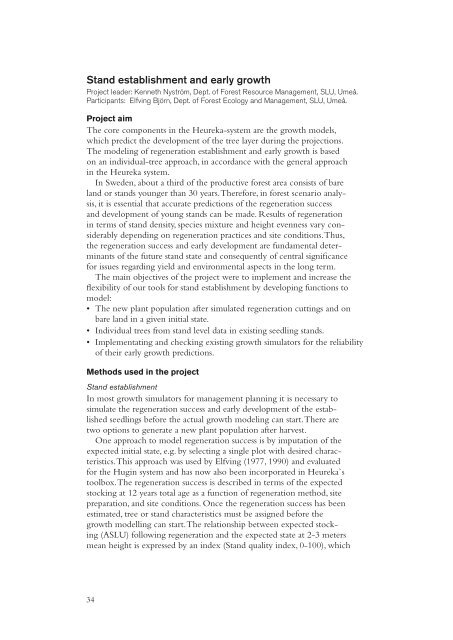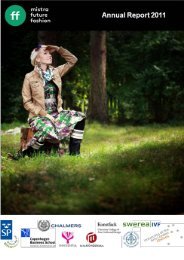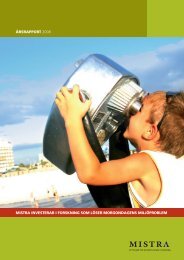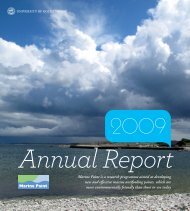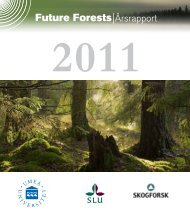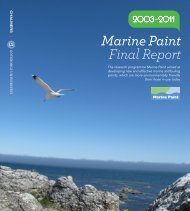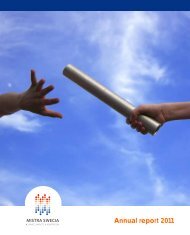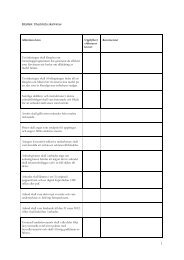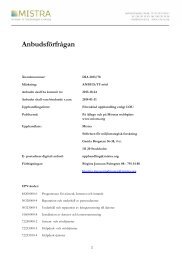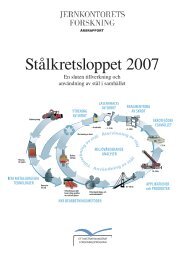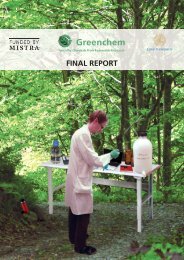The Heureka Research Programme - Mistra
The Heureka Research Programme - Mistra
The Heureka Research Programme - Mistra
Create successful ePaper yourself
Turn your PDF publications into a flip-book with our unique Google optimized e-Paper software.
Stand establishment and early growthProject leader: Kenneth Nyström, Dept. of Forest Resource Management, SLU, Umeå.Participants: Elfving Björn, Dept. of Forest Ecology and Management, SLU, Umeå.Project aim<strong>The</strong> core components in the <strong>Heureka</strong>-system are the growth models,which predict the development of the tree layer during the projections.<strong>The</strong> modeling of regeneration establishment and early growth is basedon an individual-tree approach, in accordance with the general approachin the <strong>Heureka</strong> system.In Sweden, about a third of the productive forest area consists of bareland or stands younger than 30 years. <strong>The</strong>refore, in forest scenario analysis,it is essential that accurate predictions of the regeneration successand development of young stands can be made. Results of regenerationin terms of stand density, species mixture and height evenness vary considerablydepending on regeneration practices and site conditions. Thus,the regeneration success and early development are fundamental determinantsof the future stand state and consequently of central significancefor issues regarding yield and environmental aspects in the long term.<strong>The</strong> main objectives of the project were to implement and increase theflexibility of our tools for stand establishment by developing functions tomodel:• <strong>The</strong> new plant population after simulated regeneration cuttings and onbare land in a given initial state.• Individual trees from stand level data in existing seedling stands.• Implementating and checking existing growth simulators for the reliabilityof their early growth predictions.Methods used in the projectStand establishmentIn most growth simulators for management planning it is necessary tosimulate the regeneration success and early development of the establishedseedlings before the actual growth modeling can start. <strong>The</strong>re aretwo options to generate a new plant population after harvest.One approach to model regeneration success is by imputation of theexpected initial state, e.g. by selecting a single plot with desired characteristics.This approach was used by Elfving (1977, 1990) and evaluatedfor the Hugin system and has now also been incorporated in <strong>Heureka</strong>`stoolbox. <strong>The</strong> regeneration success is described in terms of the expectedstocking at 12 years total age as a function of regeneration method, sitepreparation, and site conditions. Once the regeneration success has beenestimated, tree or stand characteristics must be assigned before thegrowth modelling can start. <strong>The</strong> relationship between expected stocking(ASLU) following regeneration and the expected state at 2-3 metersmean height is expressed by an index (Stand quality index, 0-100), which34


